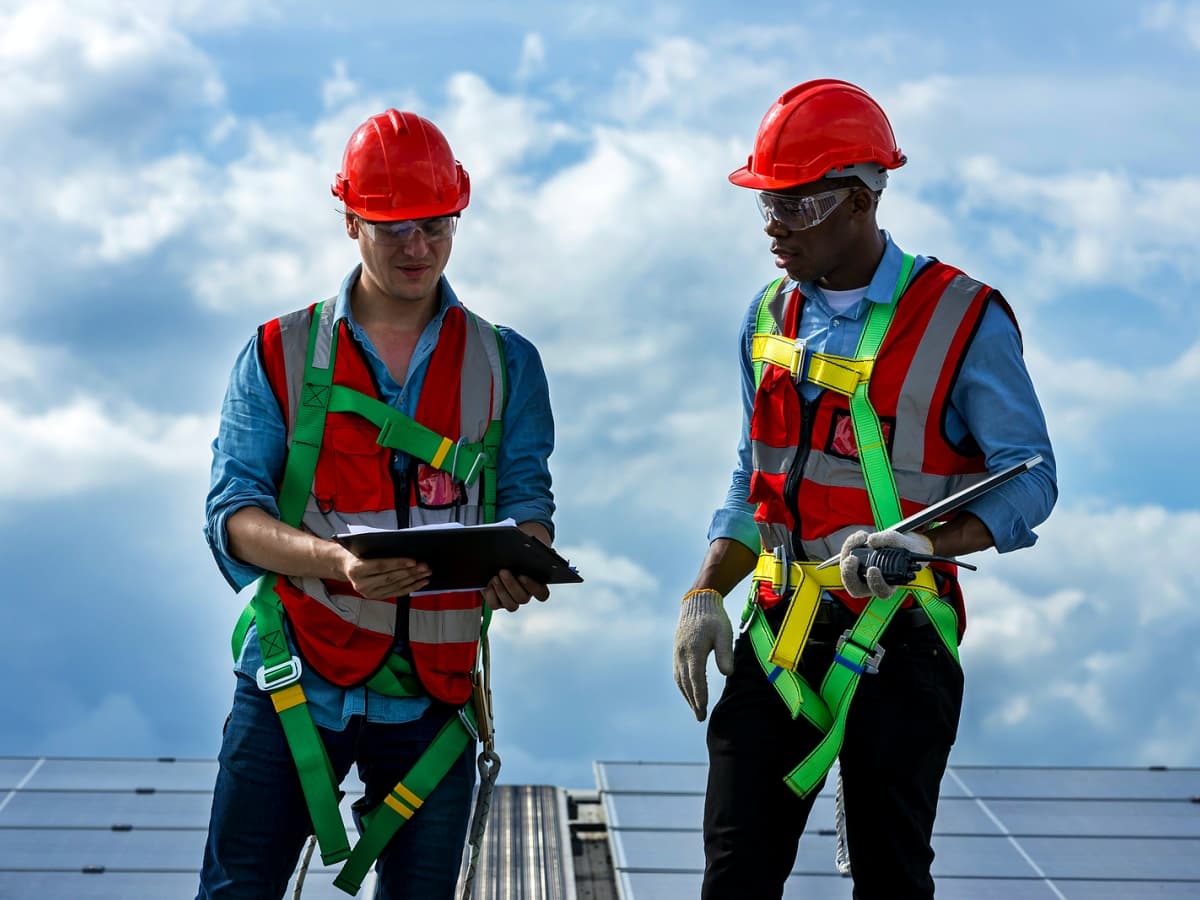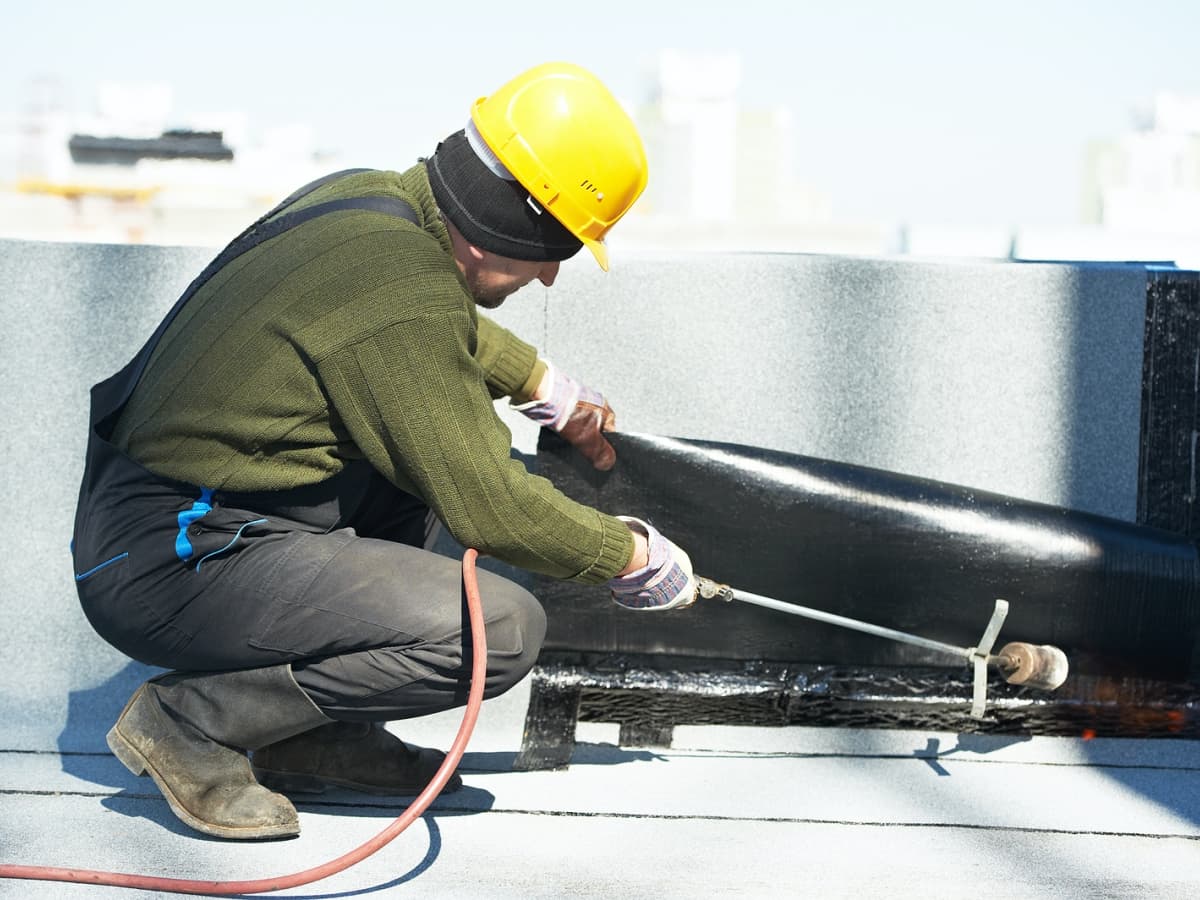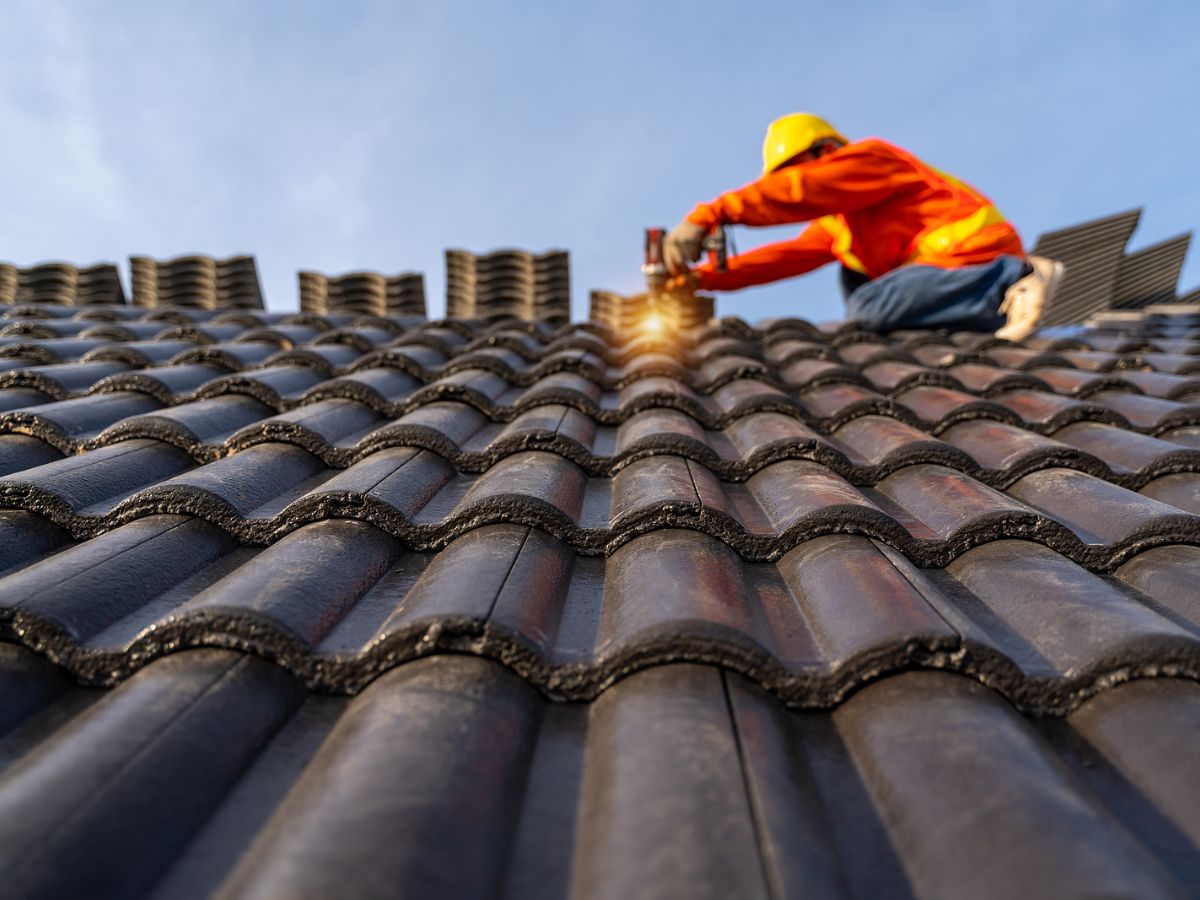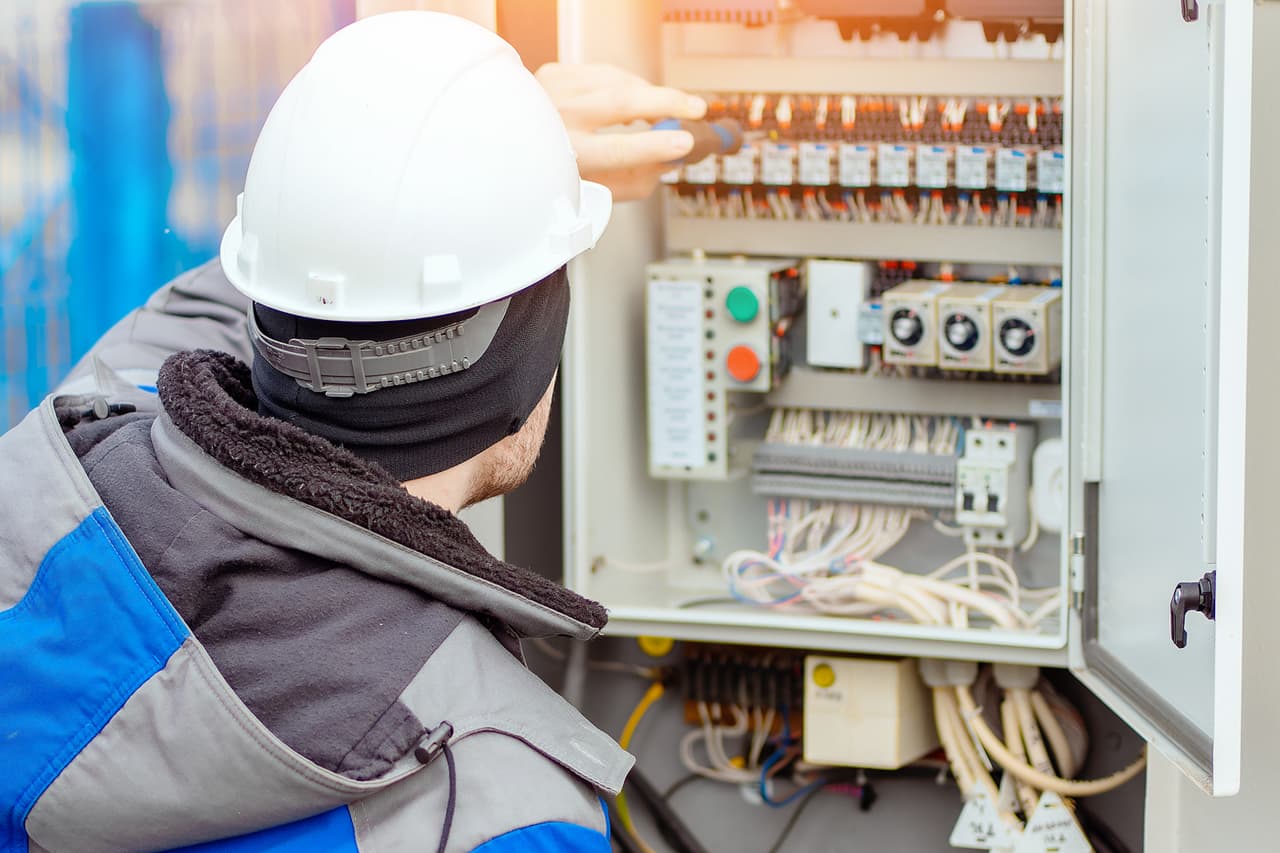Chances are, you won’t have to go very far to find someone in the construction industry to agree with this statement: Construction is dangerous. Inside and outside the industry, it’s clear that working on an active job site means coming in close contact with dangerous situations on a daily basis. If you’re not properly prepared, those situations can easily escalate to life threatening.
At Dataforma, we’re committed to supplying roofing contractors with cloud-based software that enables them to operate more efficiently. Efficiency, however, has to go hand-in-hand with safety. That’s why we’ve compiled roofing safety guidelines from across the industry, including regulations and standards from the Occupational Safety and Health Administration (OSHA) and the National Roofing Contractors Association (NRCA).
By the Numbers
The leading cause of fatalities in the entire construction industry is falls. According to OSHA, falls accounted for 3,500 fatalities between 2003 and 2013. Of those 3,500 fatalities, 34% (or 1,200 fatalities) were the result of falls from roofs.
Roofing contractors are faced with dozens of hazards every time they step foot on a job site, from inclement weather to hazardous substances. As an employer, the safety of your employees is paramount. You wouldn’t send your team to a job site without any tools, so why would you send them without the proper safety training? At the end of the day, both are crucial elements to ensuring your project gets done right.
Construction Site Safety: Guidelines & Practices
In 2013, OSHA compiled a list of the standards frequently cited during their inspections of roofing contractors:
| Rank By Number of Citations Issued | Categories | Standard |
| 1 | Duty to have fall protection | 1926.501 |
| 2 | Ladder Safety | 1926.1053 |
| 3 | Fall Protection Training | 1926.503 |
| 4 | Eye and Face Protection | 1926.102 |
| 5 | General Scaffold Requirements | 1926.451 |
| 6 | General Safety and Health Provisions | 1926.20 |
| 7 | Head Protection | 1926.100 |
| 8 | Fall Protection Systems Criteria and Practices | 1926.502 |
| 9 | Ladder Training Requirements | 1926.1060 |
| 10 | Hazard Communication | 1926.59 |
Let’s take a closer look at some of the safety requirements in roofing jobs. The following are just some examples of the types of OSHA roofing safety and fall regulations out there. Always refer to OSHA when preparing your project-specific safety plan.
OSHA Roof Safety: Fall Protection
When a fatality is caused by a fall, 90 percent of the time, the individual did not have a fall-protection system in place. That is a staggering statistic that highlights the crucial role fall protection plays in your overall safety plan.
The first step is to assess whether or not the workplace will be able to structurally support your workers. This is the responsibility of the employer, and it must happen before work can begin. If a fall hazard is identified, the employer must select one or more fall-protection options to ensure the worker’s safety. Some examples of fall hazards include instances where a worker is exposed to a workplace height of six feet or higher or when a workplace includes roof holes like skylights.
According to OSHA, here are some examples of roofing fall protection options for job sites:
Covers
Guardrail Systems
Safety-Net Systems
Personal Fall Arrest (PFA) Systems
Covers – 1926.502(i)
Covers are great solution for when workers face workplaces with roof holes. In order for covers to be effective, however, they must meet the following standards:
– Support, at a minimum, twice the weight of the workers, equipment and materials utilizing the cover (29 CFR 1926.502(i)(2)).
– Have secured installation points to eliminate the possibility of the cover coming undone from weather, workers or equipment (29 CFR 1926.502(i)(3)).
– Be marked and/or color coded so there’s a clear hazard warning, like “HOLE” or “COVER” (29 CFR 1926.502(i)(4)).
Guardrail Systems – 1926.502(b)
Guardrail systems are another highly effective way to protect workers from roof openings as well as roof perimeters. Some of the criteria for operating an OSHA-approved guardrail system include the following:Top rails must be installed between 35 and 49 inches above the walking/workplace surface
– Top rails must be installed between 35 and 49 inches above the walking/workplace surface (29 CFR 1926.502(b)(1)).
– Midrails, screens or other intermediate structural members must be installed in the case where no wall/parapet is at least 21 inches high (29 CFR 1926.502 (b)(2)). When required, midrails must be installed halfway between the top edge of the guardrail system and the walking/workplace surface (29 CRF 1926.502 (b)(2)(i)).
– Balusters, or other intermediate members, cannot be installed more than 19 inches apart when utilized between posts.
– All guardrail systems must have the ability to withstand 200 pounds of applied force within two inches of the top edge, in both outward and/or downward directions (29 CFR 1926.502(b)(3)). If the top edge of the system’s height deflects less than 39 inches above the walking/workplace level, the system is not in acceptable working condition.
– I n the case of midrails, screens, mesh and other structural members, these pieces must have the ability to withstand 150 pounds of applied force in both outward and/or downward directions (29 CFR 1926.502(b)(5)). Unlike guardrails, these systems must be able to withstand this force at any point along the system. Additionally, toeboards must be able to withstand a minimum of 50 pounds.
– When using guardrail systems around holes that are acting as access points (as would be the case with ladderways), the worker must use a gate or offset the access point to eliminate the fall hazard.
Safety-Net Systems – 1926.502(c)
In situations where safety-net systems are required, the safety-net should be installed under the walking/workplace surface, as close as possible without obstructing worker’s passageways. When installing, make sure to check that safety-nets are no lower than 30 feet below walking/workplace surfaces. A member from your team should always be checking the quality of your safety-nets to ensure they haven’t sustained any damage while out on the jobsite.
Regarding safety-net openings, OSHA requires all openings to not exceed 36 square inches, nor six inches on any side.
Each safety-net must be equipped with a border rope for webbing that maintains a minimum breaking strength of 5,000 pounds. Additionally, OSHA requires that every safety-net on site “be capable of absorbing an impact force of a drop test of a 400-pound bag of sand 30 inches in diameter dropped from the highest walking and/or workplace surface at which workers are exposed, but not from less than 42 inches above that level.”
When placing your safety-net, OSHA recommends the following distances from working level in relation to distance of safety-net:
| Vertical Distance From Working Level to Horizontal Plane of Net Surface | Minimum Required Horizontal Distance of Outer Edge of Net From Edge of Working Surface |
| Up to 5 feet | 8 feet |
| More than 5 feet | 10 feet |
| Up to 10 feet | 10 feet |
| More than 10 feet | 13 feet |
PFA Systems 1926.502(d)
As we already know, employers must provide workers with fall protection systems when workers are exposed to workplaces six feet or greater in height. This makes PFA systems the perfect solution to ensuring fall protection.
PFAs include anchors, harnesses, lifeline/lanyard and a deceleration device. Each component must interact with one another to ensure safety. The anchor is connected to the lifeline/lanyard by the lifeline/lanyard’s snap hook, which is then connected to the harness. PFAs can use either a lifeline/lanyard or deceleration device.
For PFA systems to be their most effective, workers must also factor in the following considerations before beginning work:
Free-fall distance: This is basically what it sounds like. What is the distance that the worker could fall before the PFA would decelerate? OSHA requires this distance to be six feet or less (29 CFR 1926.502(d)(16)(iii)).
Deceleration distance: What is the maximum distance the PFA system’s lanyard will stretch in order to arrest the fall? OSHA requires the distance to be no greater than 3.5 feet (29 CFR 1926.502(d)(16)(iv)). Make sure to check with your company’s designated safety manager, as there may be exceptions for certain types of PFA system equipment
D-Ring shift: When a worker falls, how far is the D-Ring shifting/how far is the harness stretching to be able to support the worker, tool belts and any attachments? Industry professionals usually assume a one-foot shift, although that will vary depending on the PFA system.
Back D-Ring height: Has the D-Ring height been measured, and what is the minimum standard? Industry practices suggest measuring from the D-Ring to the sole of the worker’s footwear. As for minimums, industry professionals assume a five-foot distance. This, however, is based on a worker that is a at least six-feet tall — adjustments should be made for shorter and taller workers.
Safety margin: If a worker were to fall, has the clearance level been measured? OSHA recommends allowing a minimum of two feet for your safety margin.
OSHA Roof Safety: Ladders
One of the most important tools that a roofer has at their disposal is a reliable ladder. Because of this, employers must make sure they are taking every necessary step to ensure their workers are utilizing ladders in the safest and smartest way possible:
– Always secure stable and level surfaces for your ladder’s footing. Depending on the jobsite, workers may need to secure the ladder to eliminate the hazard of the equipment slipping or shifting (29 CFR 1926.1053(b)(6)).
– Never place a ladder in areas of high traffic, such as driveways or doorways (29 CFR 1926.1053(b)(8)).
– Always maintain three points of contact — two hands and a foot or two feet and a hand. Workers shouldn’t carry items when climbing up or down ladders (29 CFR 1926.1053(b)(22)). Tools or materials can be placed in a bucket next to the ladder and pulled up after the worker is secured onto the workplace.
Extension Ladders
Extension ladders are one of the two most common ladders utilized by roofers, and workers must ensure extension ladders aren’t set at an angle — OSHA requires the horizontal distance between the top support and the foot of the ladder to be approximately one-quarter the working length of the ladder (29 CFR 1926.1053(b)(5(i)).
When setting up your extension ladder, the side rails need to extend to a minimum of three feet above the upper workplace surface (29 CFR 1926.1053(b)(1)). If this is not possible, the worker should secure the top of the ladder to a rigid surface and utilize a grasping device to mount/dismount the ladder.
Stepladders
The second most common ladder utilized in the roofing industry is the step ladder. As tempting as it might be, workers should refrain from using the top or top step of the ladder as a step, as the top/top step is not equipped to handle the pressure of a worker and has the potential to cause serious injury (29 CFR 1926.1053(b)(13)).
When deciding on what type of stepladder is best for the application at hand, consult the following chart provided by OSHA:
| Type | Duty Rating | Use | Load |
| 1AA | Special Duty | Rugged | 375 lbs. |
| 1A | Extra Heavy Duty | Industrial | 300 lbs. |
| 1 | Heavy Duty | Industrial | 250 lbs. |
| ll | Medium Duty | Commercial | 225 lbs. |
| lll | Light Duty | Household | 200 lbs. |
OSHA Roofing Safety: Personal Protective Equipment (PPE)
One of the easiest ways to ensure your workers are operating in safe conditions is usually one of the hardest to enforce. While some workers may scoff at the idea of PPE, it’s the employer’s responsibility to ensure every worker on the job site is wearing appropriate PPE (29 CFR 1926.28 and CFR 29 1926.96).
Listed below are some of the most typical PPE used with various roofing tools and equipment. Outside of OSHA roofing requirements, it is up to the employer to decide when and where certain PPE is appropriate (hard hats, safety glasses, work boots, work gloves, high-visibility vests, hearing protection, etc.):
| Tools/Equipment | PPE Required (minimum) |
| Nail Gun | Hearing Protection Eye Protection (Safety Glasses) |
| Generator/Air Compressor | Hearing Protection Eye Protection (Safety Glasses) |
| Compressed Air | Hearing Protection Eye Protection (Safety Glasses) |
| Shingle Stripper (Manual) | Proper Footwear Eye Protection (Safety Glasses) |
| Tin Snips | Work Gloves Eye Protection (Safety Glasses) |
| Power Saw | Hearing Protection Eye Protection (Safety Glasses) Work Gloves |
| Mobile Equipment/Traffic | High-Visibility Clothing/Vest |
OSHA Roofing Safety: Scaffolding
OSHA requires an experienced and trained professional be responsible for erecting any scaffolding that workers may need to utilize throughout the project (29 CFR 1926.451(f)(7)).
Access
When workers are climbing on and off scaffolding, they are opening themselves up to a fall hazard. That’s why it’s important to provide safe access.
For scaffolding platforms that are more than two feet above or below an access point, OSHA requires workers to use any one of the following: “portable ladders, hook-on ladders, attachable ladders, stair powers, stairway-type ladders, ramps, walkways, integral pre-fabricated scaffold access, or direct access from another scaffold, structure, personnel hoist or similar surface” (29 CFR 1926.451(e)(1)).
Platform
In order to utilize platforms safely, workers should check to make sure all platforms are full-planked and/or decked between the front uprights and the guardrail supports (29 CFR 1926.451(b)(1)). When reviewing this, workers should also ensure the space between the platform and the uprights isn’t more than an inch wide (29 CFR 1926.451(b)(i)).
OSHA Roofing Safety: Hazard Communication
The nature of roofing means that more often than one would like, roofing contractors may be exposed to hazardous substances. While at times the exposure is unavoidable, the way in which employers can protect their workers is not.
It is the employer’s responsibility to not only develop a Hazard Communication Program, but also to ensure all workers have thoroughly reviewed and understood the contents of the program, including data sheets and container labeling (29 CFR 1926.59 and 29 CFR 1910.1200).
Before facing health hazards in the field, employers and workers should refer to OSHA on how to safely handle commonly faced hazards like asbestos, lead and silica.
Dataforma & Roofing Contractors: Keeping Your Business Balanced
Dataforma is the roofing industry’s largest provider of web-based roofing management services for professional contractors. We pride ourselves on delivering services that keep your business up and running, so you can focus on your projects, the safety of your workers, and minimizing disruptions to your daily activities.
Utilizing our system means contractors are able to manage everything from project data, work/order/invoicing processes and customer correspondence records to bulk mailings, product information and document storage. When you invest in our innovative, cloud-based roofing software, you’ll benefit from:
– Ultra secure data storage
– Cost-effective technology managementScalable software solutions to meet growth
– Scalable software solutions to meet growthAccessibility from multiple locations
– Accessibility from multiple location
– Contractor-/Partner-driven development
– Single source business management system
– Streamlined company processes
– Elimination of repetitive data entry
– Operational efficiency and organization
Safety is your first step. Let us help you take the next one. To learn more about Dataforma’s products and services that will keep your company ahead of the game, contact us today.










